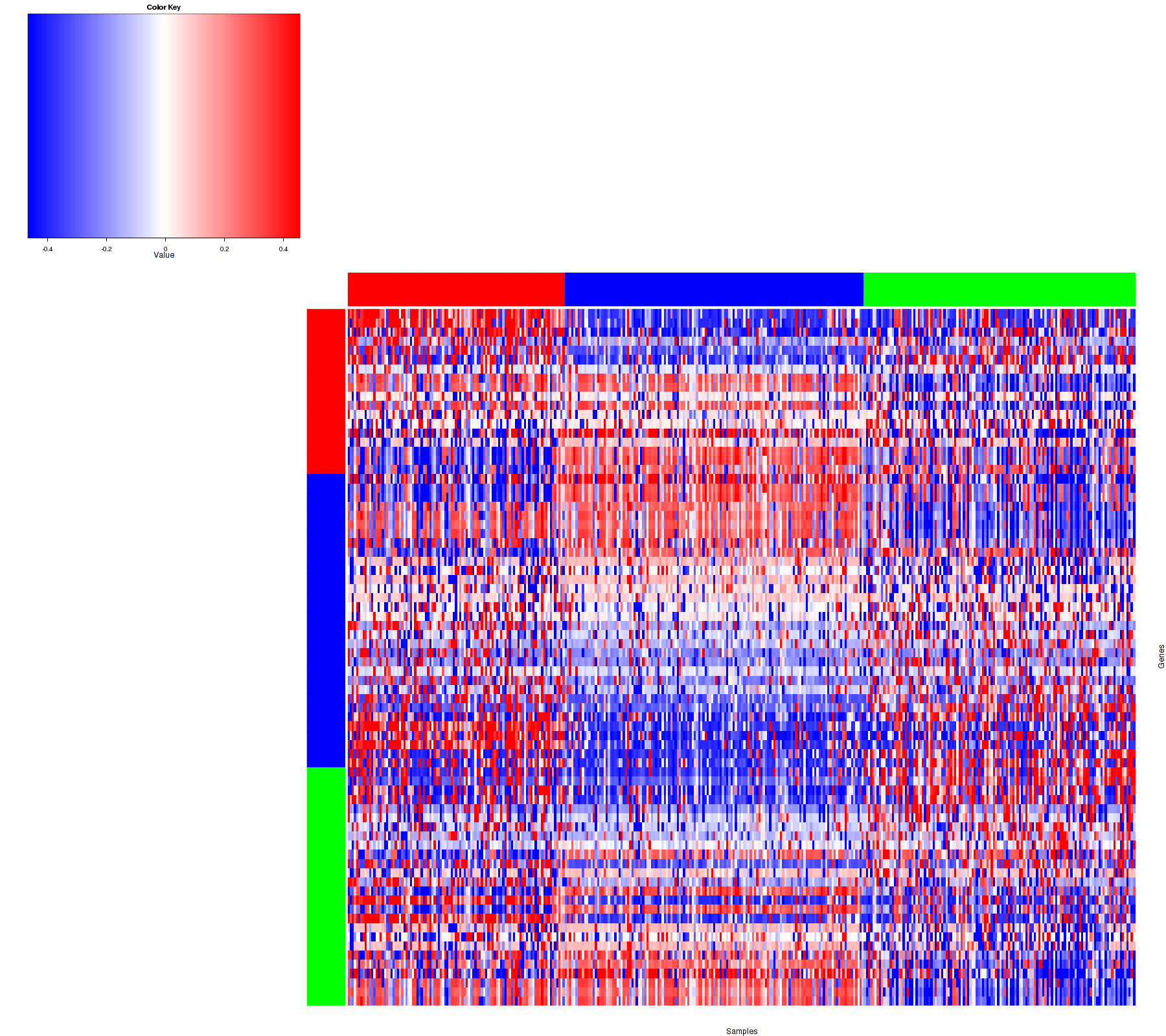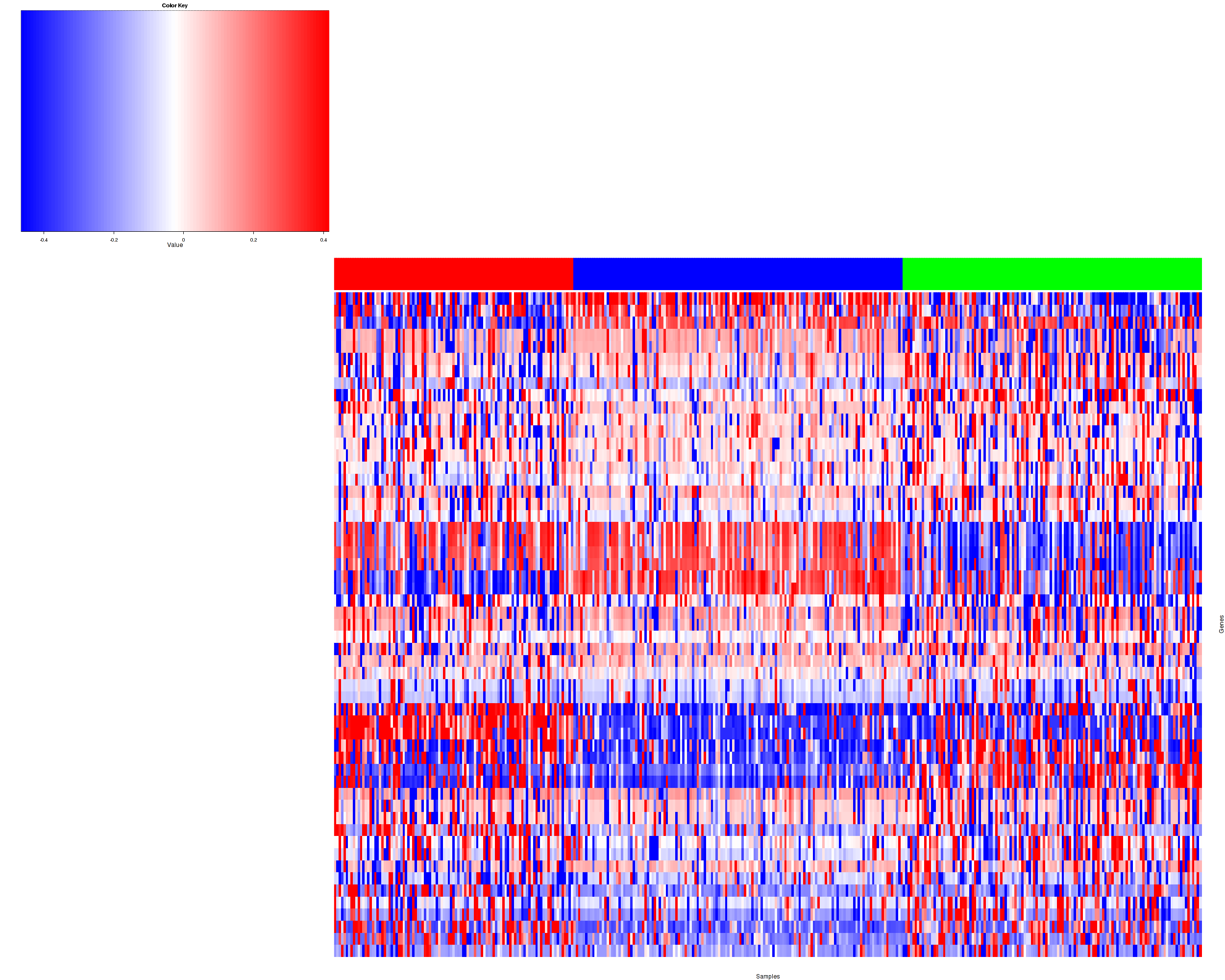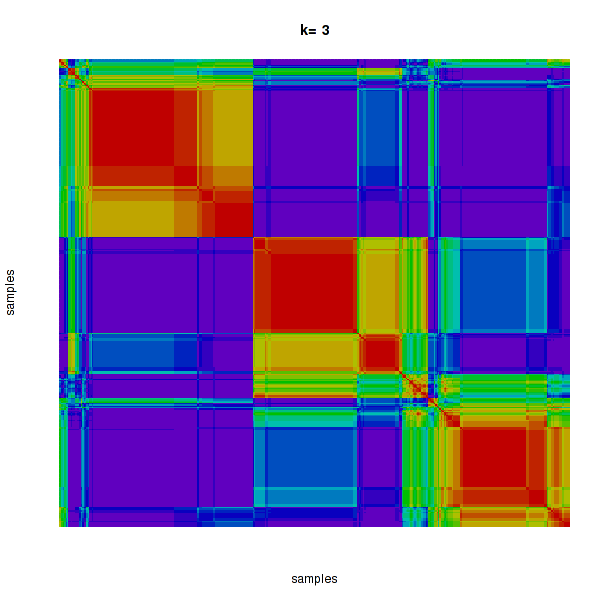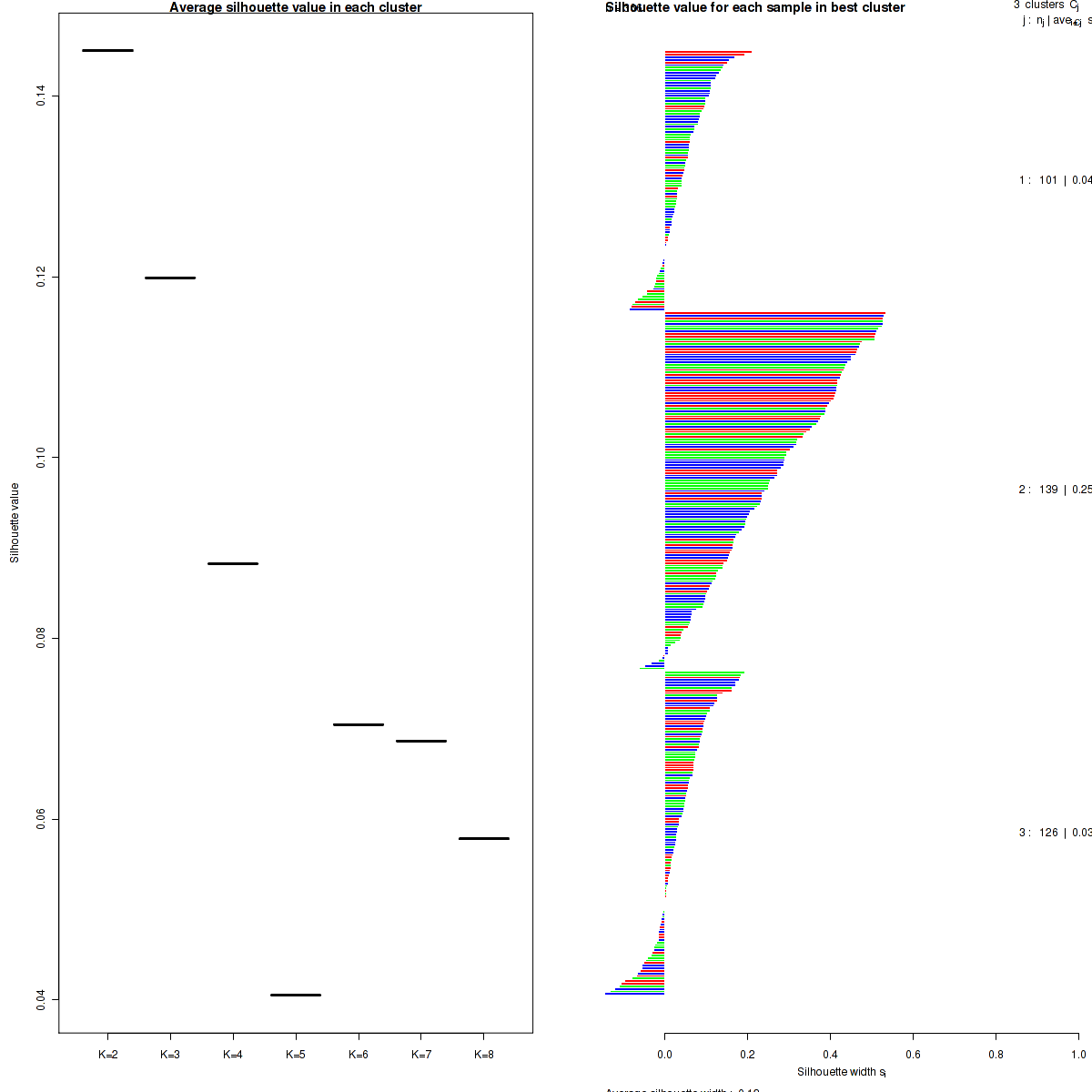Clustering of copy number data by focal peak region with log2 ratio: consensus NMF
Skin Cutaneous Melanoma (Metastatic)
02 April 2015
|
analyses__2015_04_02
Maintainer Information
Citation Information
Maintained by TCGA GDAC Team
(Broad Institute/MD Anderson Cancer Center/Harvard Medical School)
Cite as
Broad Institute TCGA Genome Data Analysis Center
(2015):
Clustering of copy number data by focal peak region with log2 ratio: consensus NMF.
Broad Institute of MIT and Harvard.
doi:10.7908/C1GF0SNX
Overview
Introduction
Summary
The most robust consensus NMF clustering of 366 samples using the 55 copy number focal regions was identified for k = 3 clusters. We computed the clustering for k = 2 to k = 8 and used the cophenetic correlation coefficient to determine the best solution.
Results
Copy number focal events of molecular subtypes
Consensus and correlation matrix
Silhouette widths
Samples assignment with silhouette width
Marker focal events of each subtype
Methods & Data
Copyright © 2015
Broad Institute TCGA GDAC as part of the TCGA Research Network.
All rights reserved.




